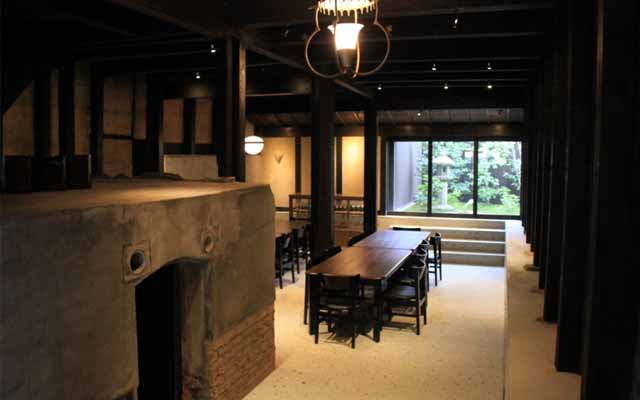
Source: Kyoto Moyashi House
120-Year-Old Plantation Building Renovated Into Breathtaking Overnight Inn
- Source:
- Kyoto Moyashi House
Related Article
-

Train makes surprising stop at gas station in Japan
-

Fearsome Palm Tree Japanese Folklore Dragon Gives Goosebumps In Okinawa
-

Japan’s New Curry Rice Cooker Lets You Cook Curry And Rice At The Same Time!
-

Witness capybaras taking a dip in an onsen this winter at Izu Shaboten Zoo
-

105 Year-Old Japanese Runner Sets World Record For 100 Meter Dash
-

The Japanese Art Of The Cocktail: Videos Show Off The Craftsmanship Of Master Bartenders


Old houses and buildings are being renovated every day, and even the slightest touch-up can turn one into a splendid oasis.
Built over 120 years ago, Kyoto Moyashi House is a traditional Japanese townhouse in Kyoto that was renovated into an overnight inn. Also available as a location for receptions, events, or simply a place where people can gather and mingle, this former machiya (traditional townhouse) transports you back in time to the late 1800s Japan.
This “site for new seeds to grow” was formerly used as an indoor greenhouse, a plantation site that produced seed malt for sake. During that time, seed malt was called moyashi, a noun used to describe the growth of flowers and plants.
Perfectly preserved since its golden days, the Kyoto Moyashi House breathtakingly embraces tradition and modernity with its serene interior. With 4 rooms, a dining room, a courtyard, and a backyard, a week won’t even be enough to bask in the luxury of this beautiful location. It even has a hinoki (Japanese cypress) bath!
Tatami Room
Source: Kyoto Moyashi House
Itama (First Floor)
Source: Kyoto Moyashi House
Kitchen
Source: Kyoto Moyashi House
Source: Kyoto Moyashi House
Courtyard
Source: Kyoto Moyashi House
Dining
Source: Kyoto Moyashi House
Source: Kyoto Moyashi House
Source: Kyoto Moyashi House
Tearoom
Source: Kyoto Moyashi House
Itama (Second Floor)
Source: Kyoto Moyashi House
Source: Kyoto Moyashi House
Hinoki Bath
Source: Kyoto Moyashi House
The structure of the house is reminiscent of those built in the 1800s. Because homes back then were taxed according to their width, the plot width (called maguchi in Japanese) is very narrow, but has plenty of depth in return. The original structures and fittings used to grow koji seeds inside the plantation also remain as part of the townhouse.
Anyone can stay overnight at this machiya, but rates vary depending on the number of people and usage. For the record, it costs about 50,000 yen (428 USD) for 4 people to stay overnight — but for the chance to spend time here, we’d gladly pay the price.